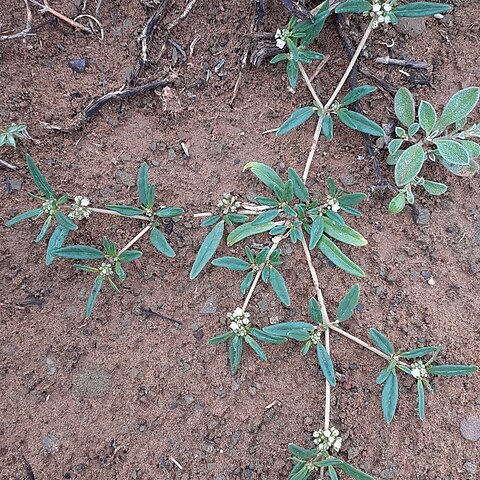Herbs annual, 20-50 cm, prostrate. All parts streaked with linear white raphides. Petiole poorly defined, 2-10 mm; leaf blade elliptic, lanceolate, or spatulate, 1-2.5 cm × 4-10 mm, both surfaces with many white raphides, base attenuate, apex obtuse or subacute. Inflorescences mostly sessile, apparently axillary, densely umbel-like. Flowers 5-20. Pedicel 3-5 mm. Tepals 5, green (to red), ovate, 1.5-2 mm, apex acute. Stamens 5, ca. 1 mm; filaments flattened and dilated at base. Carpels 5; styles short. Mericarp reniform, mostly spiny tuberculate, sometimes also some smooth, surrounded by persistent tepals. Seeds black, smooth, minutely pitted. Fl. summer-autumn, fr. winter.
A herb. It lays along the ground. It keeps growing from year to year. It is 20-50 cm long. It grows out from a central spot. The leaves have white dots. The leaves are leathery and shiny with a groove down the middle. The leaf blade is 1-2.5 cm long by 4-10 mm wide. The leaves are in pairs opposite one another or in rings. The flowers are in dense groups without stalks. There are 5-20 flowers. The flowers are green. They can also be pink or purple with a white centre. The seeds are black and smooth and with very small pits.
Like G. africana but stamens 5 (not 10-15), flowers opening together, white or yellow.

